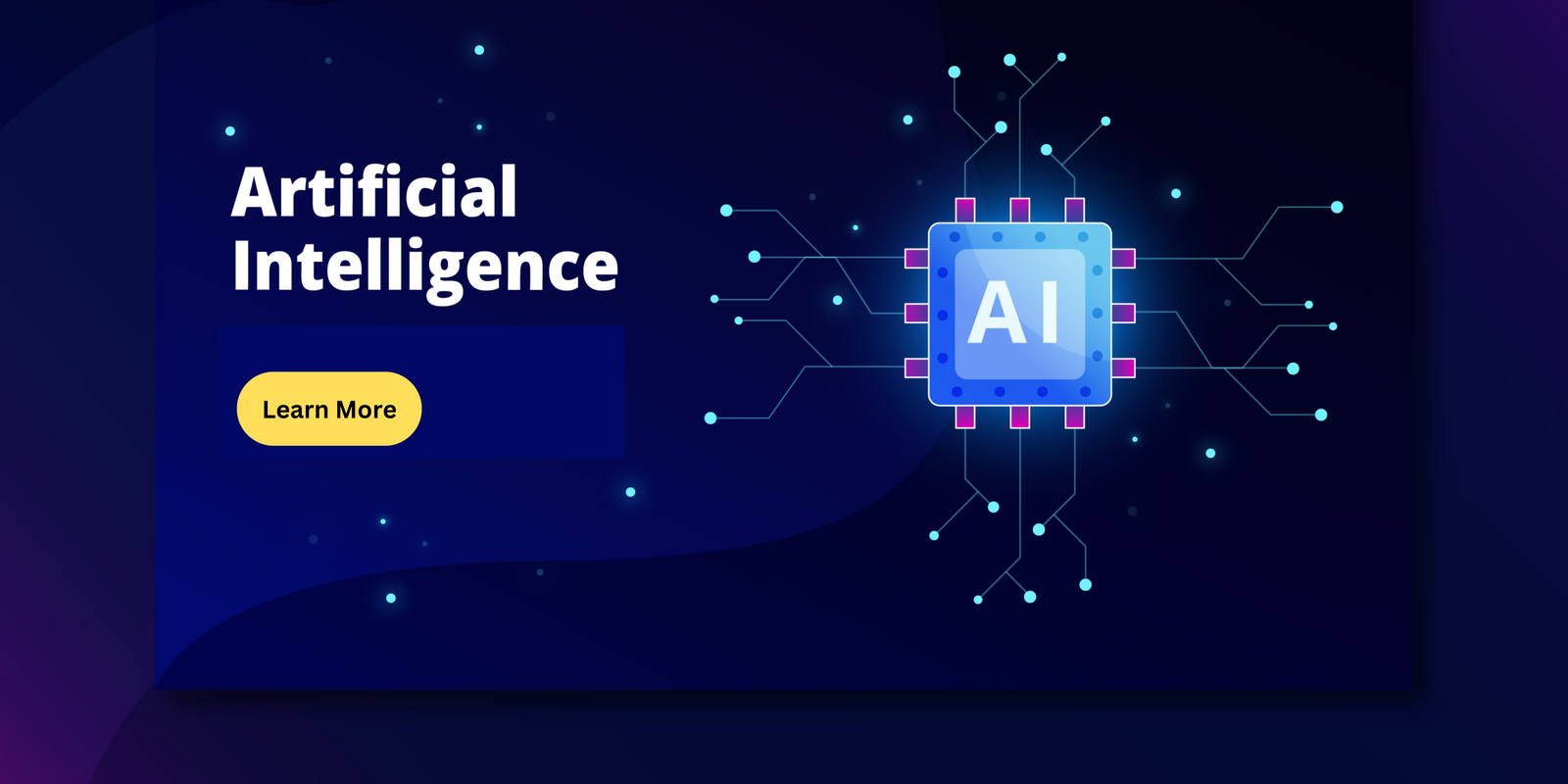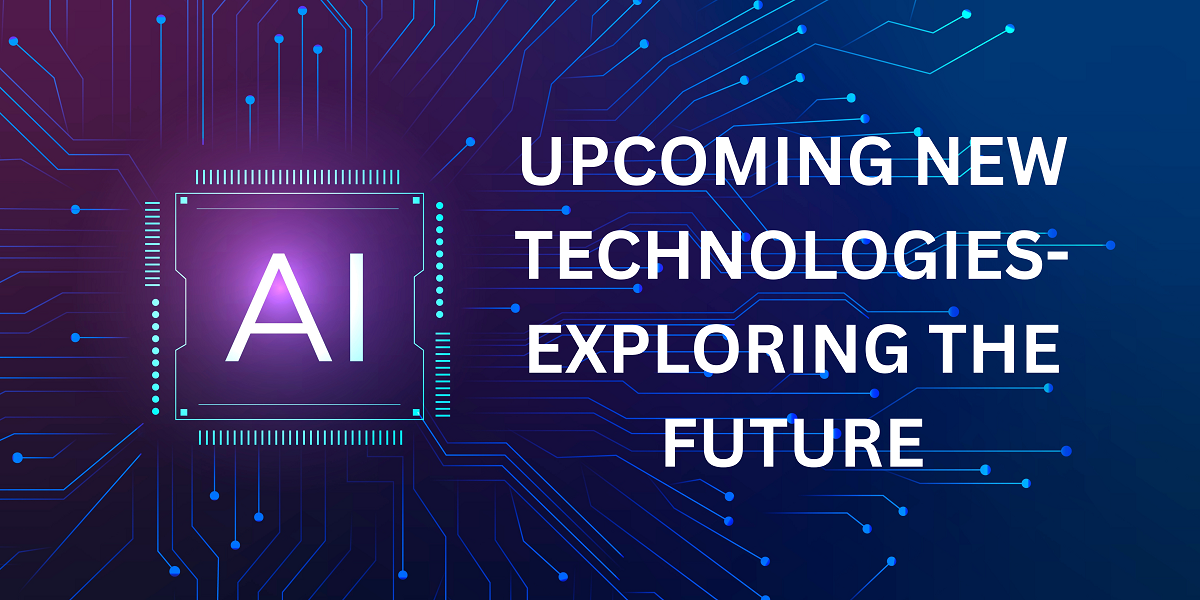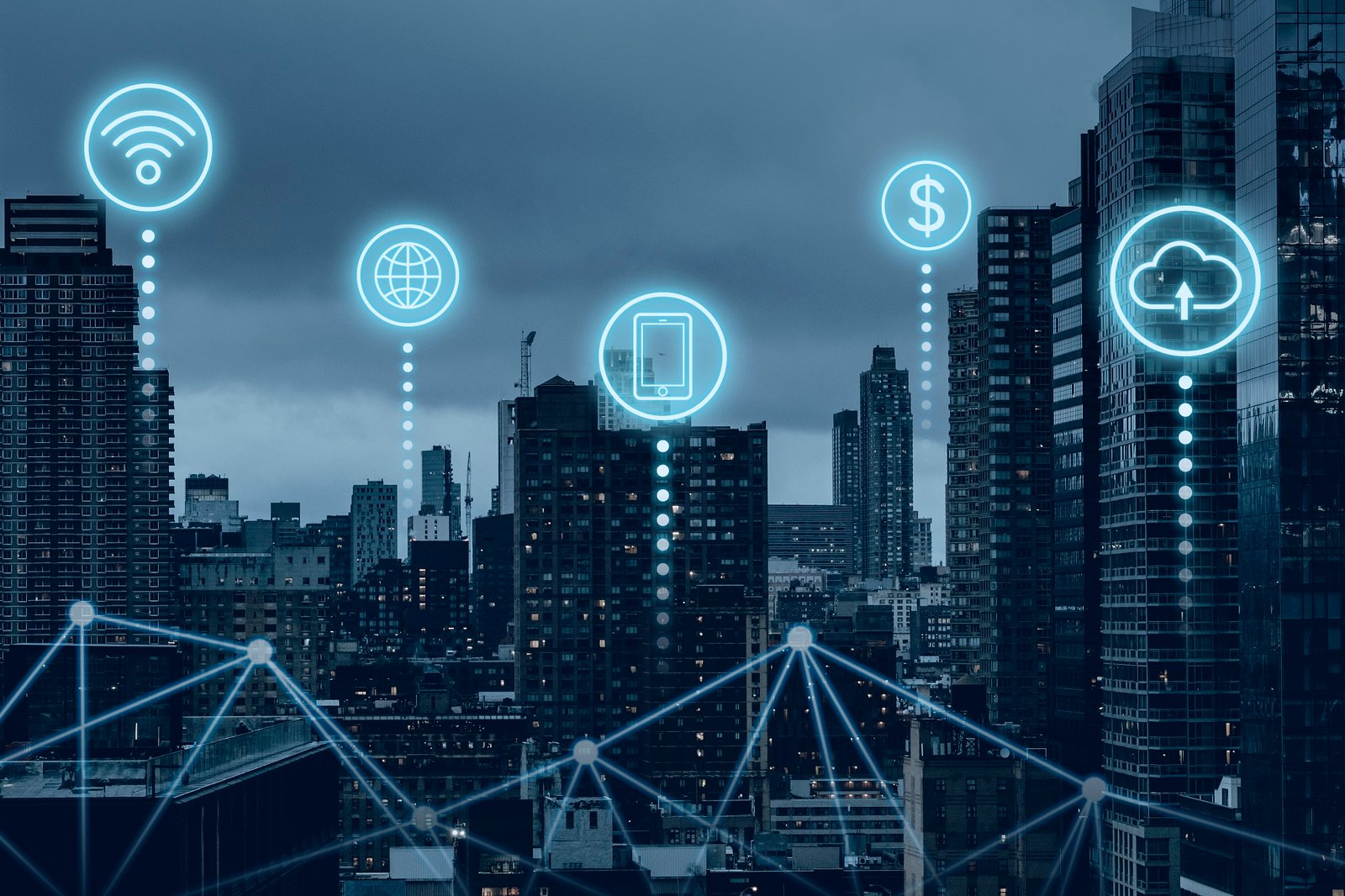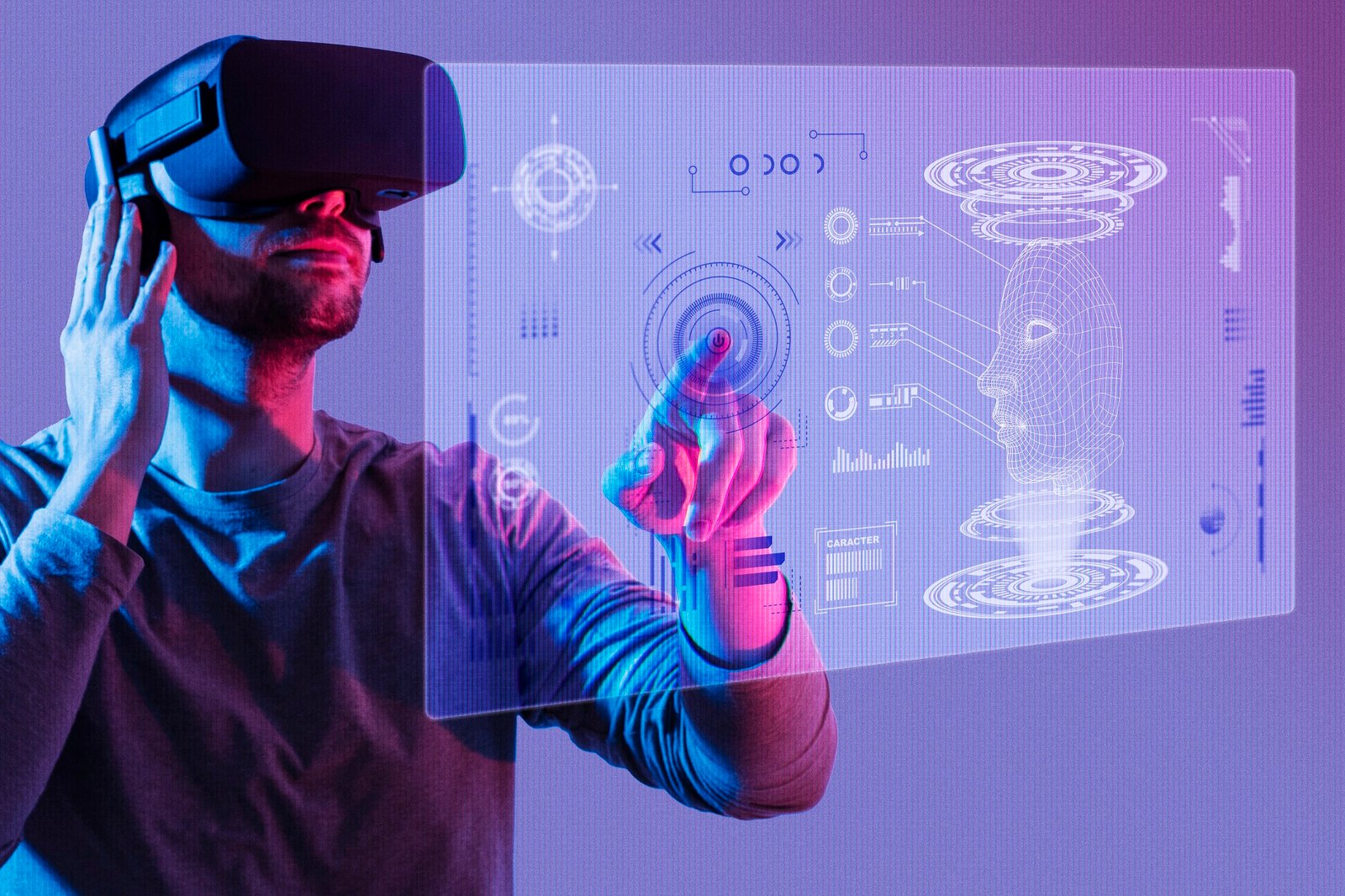Upcoming New Technologies : Exploring the Future
Introduction
In today’s rapidly evolving technological landscape, innovation is a constant. From artificial intelligence (AI) to blockchain, emerging technologies are reshaping industries and transforming the way we live and work. This article delves into the exciting realm of upcoming new technologies, exploring the potential of AI, blockchain, the Internet of Things (IoT), virtual reality (VR), and augmented reality (AR).

1. Artificial Intelligence (AI)
Heralding a New Era
Artificial intelligence, or AI for short, is changing many aspects of our existence. Artificial intelligence (AI) is going to change a lot of industries, including transportation and healthcare, because it can replicate human intelligence.
Impact and Applications
Artificial intelligence is not just an idea for the future; it’s here to stay. A few instances of AI applications that are revolutionising sectors and increasing efficiency are self-driving vehicles, illness diagnostics, and personalised online experiences.

Pros:
- Efficiency: Tasks may be automated by AI, which boosts productivity and efficiency.
- Accuracy: AI systems are capable of precisely analysing enormous volumes of data, which lowers mistake rates.
- Innovation: AI promotes innovation by making it possible to create new goods and services.
- Personalization: AI has the power to make experiences more engaging and satisfying for users.
- Decision-making: By offering data-driven insights, AI systems may support decision-making procedures.
Cons:
- AI:automation may result in the loss of jobs in a number of industries.
- Privacy, prejudice, and algorithmic transparency are among the ethical issues that AI presents.
- Dependence: Reliance on AI systems too much might result in a lack of critical thinking abilities and dependence problems.
- Security Risks: Cyber attacks and security lapses might potentially affect AI systems.
- Cost: Putting AI technology into practice may be costly, particularly for smaller companies.

2. Blockchain
The Power of Decentralization
Blockchain technology is a game-changer because it provides transparent, decentralised platforms for safely recording transactions.
Disruptive Potential
Blockchain technology has the ability to transform conventional procedures and improve trust, which has significant benefits for several industries like financial services, supply chain management, and voting systems.

Pros:
- Security: Because blockchain data storage is tamper-proof and decentralised, it provides improved security.
- Transparency: By providing real-time transaction tracking and verification, blockchain technology promotes transparency.
- Trust: By removing the need for middlemen, blockchain promotes trust among participants.
- Efficiency: By eliminating paperwork and manual reconciliation, blockchain simplifies procedures.
- Decentralization: The distributed nature of blockchain reduces the risk of single points of failure and increases adaptability.
Cons:
- Scalability: As the network expands, blockchain scalability problems might appear, resulting in slower transaction rates.
- Regulatory Uncertainty: As the laws governing blockchain technology continue to change, compliance becomes more difficult.
- Energy Consumption: Proof-of-work blockchain techniques use a lot of energy, which is concerning for the environment.
- Integration Challenges: It can be expensive and difficult to integrate blockchain technology into current systems.
- Lack of Standardization: Collaboration and interoperability may be hampered by the absence of standards in blockchain protocols.

3. The Internet of Things (IoT)
Connecting the Physical and Digital Worlds
The network of networked devices with sensors and software built in that allow them to easily gather and exchange data is known as the Internet of Things, or IoT.
Industry Impact
IoT technology is fostering innovation in manufacturing, healthcare, and transportation by facilitating real-time monitoring, predictive maintenance, and increased operational efficiency.
Pros:
- Automation: By enabling process automation, the Internet of Things lowers the need for human involvement and boosts productivity.
- Data Insights: The Internet of Things creates enormous volumes of data that are useful for optimisation and decision-making.
- Real-time remote monitoring of systems, infrastructure, and assets is made possible by IoT.
- Predictive maintenance is made possible by the Internet of Things, which lowers downtime and lengthens asset lifespans.
- Improved connection: The Internet of Things makes it possible for devices to communicate and work together more easily via improved connection.

Cons:
- Security and privacy problems might arise from IoT devices’ susceptibility to hackers.
- Interoperability Problems: When multiple IoT platforms and devices are not standardised, interoperability problems may arise.
- Data Privacy Issues: Gathering and examining private information from Internet of Things devices presents privacy issues.
- Complexity: Keeping track of a large number of networked devices can be difficult and complex.
- Cost: Setting up and maintaining IoT infrastructure, particularly for large-scale installations, may be expensive.

4. Virtual Reality (VR) and Augmented Reality (AR)
Bridging Reality and Imagination
With immersive experiences and useful applications, virtual reality and augmented reality technologies are erasing the distinction between the actual and virtual worlds.
Practical Applications
VR and AR offer a wide range of uses in training, entertainment, education, and other fields, from realistic training simulations to on-the-spot navigation support.
Pros:
- Immersion: Virtual reality and augmented reality provide engaging and educational experiences.
- Realistic training simulations for a range of sectors are made possible by VR and AR, which enhance learning results.
- Visualisation: Augmented reality (AR) improves comprehension and visualisation by superimposing digital data over the actual environment.
- Entertainment: From games to virtual travel, VR and AR offer immersive entertainment experiences.
- Innovation: In domains like healthcare, education, and design, VR and AR are key drivers of innovation.

Cons:
- Cost: The cost of VR and AR gear and software might prevent some people from using them.
- Motion Sickness: Prolonged VR use may make some people feel uncomfortable and motion sick.
- Material Restrictions: The adoption of VR and AR technologies may be hindered by the scarcity of available materials.
- Hardware Requirements: In order to operate VR and AR apps properly, high-performance hardware is frequently needed.
- Social Isolation: Excessive VR use might cause a person to become socially isolated and detached from reality.
Conclusion
The potential of emerging new technologies is endless as we teeter on the verge of a technological revolution. In previously unthinkable ways, artificial intelligence, blockchain, the Internet of Things, virtual reality, and augmented reality are revolutionising industries, spurring innovation, and improving our daily lives.
FAQs
1. Which industries are most likely to see AI disruption?
AI has the potential to significantly impact a number of industries, including manufacturing, transportation, healthcare, and finance.
2. How are security and transparency ensured by blockchain technology?
Blockchain ensures transparency and trust by protecting transactions and upholding an immutable ledger via the use of cryptographic methods and a decentralised network of nodes.
3. Which industries are using IoT applications?
Personalized medicine, smart medical equipment, and remote patient monitoring are a few examples of IoT uses in the healthcare industry.
4. How is virtual reality different from augmented reality?
Whereas augmented reality superimposes digital material on the physical world, virtual reality offers a completely immersive digital experience.
5. What applications do VR and AR have in the classroom?
Through immersive learning environments, virtual field excursions, and interactive simulations that improve student comprehension and engagement, virtual reality and augmented reality are revolutionising education.


1 thought on “upcoming new technologies-Exploring the Future”